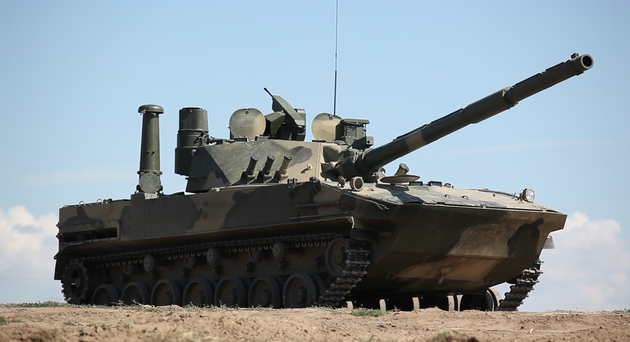The weapons suite for the latest Sprut-SDM1 lightweight amphibious tank being developed for Russia’s Airborne Force will be tested in the Black Sea during the second stage of the armored vehicle’s state trials, the press office of the state tech corporation Rostec announced on Friday.
"At the second stage of the trials, the combat vehicle is set to demonstrate the operation of the 125mm 2S25 self-propelled anti-tank gun and its efficiency in calm sea conditions as well as in rough seas of up to three points," the press office said in a statement.
During the first stage of the trials in the Black Sea, the latest tank demonstrated its high navigability properties and the ability of being transported by large amphibious assault ships. As the Rostec press office specified, the combat vehicle’s climatic tests will continue this fall. The tank has already proven its efficiency in high temperatures and will now have to withstand the test for cold weather conditions.
"The cycle of state trials is expected to be completed in early 2022. Following their results, the design documentation on the lightweight amphibious tank will be assigned the designation O1, which will make it possible to launch the serial production of these combat vehicles while the Spurt-SDM1 will be recommended for its acceptance into the Russian Army’s service," the Rostec press office said.
The Sprut-SDM1 amphibious tank developed by the High Precision Weapons Company within Rostec features a 125mm 2A75 cannon and is similar to the T-90MS main battle tank based on its firepower.
"The Sprut is being developed primarily for the Russian Airborne Force, but I am certain that it will evoke the interest of foreign customers. First of all, we are gearing towards the markets of India, Asia and the Middle East," the press office quoted Rostec Industrial Director for the Armaments, Ammunition and Special Chemistry Cluster Bekkhan Ozdoyev as saying.
The tank’s ammunition load includes armor-piercing, sub-caliber, hollow-charge, high explosive fragmentation projectiles and also air burst munitions that can strike targets at a distance of up to 5 km. The tank with a crew of three can develop a speed of up to 70 km/h on the ground and up to 10 km/h on the water, TASS reported.






